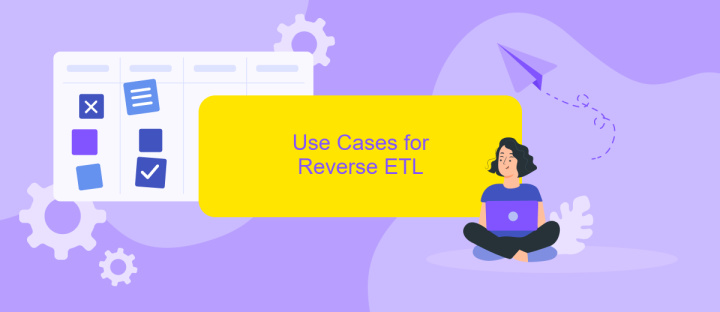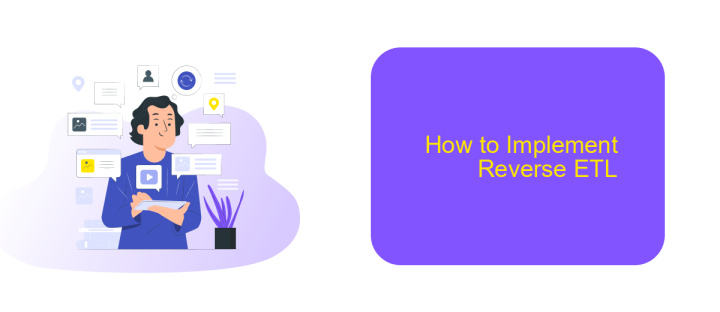Reverse ETL for Data Engineers
Reverse ETL is revolutionizing the way data engineers manage and utilize data. By enabling the seamless transfer of data from data warehouses back into operational systems, it empowers organizations to operationalize their analytics and make data-driven decisions in real-time. This article delves into the intricacies of Reverse ETL, offering insights and practical advice for data engineers looking to harness its full potential.
Introduction
In the evolving landscape of data engineering, Reverse ETL is becoming a pivotal process. Unlike traditional ETL (Extract, Transform, Load), which moves data from various sources into a data warehouse, Reverse ETL takes data from the warehouse and loads it into operational systems. This allows businesses to make data-driven decisions in real-time, enhancing operational efficiency and effectiveness.
- Enables real-time data synchronization
- Improves data accessibility for non-technical teams
- Facilitates better decision-making processes
Tools like ApiX-Drive simplify the Reverse ETL process by offering seamless integrations with various platforms. ApiX-Drive allows data engineers to connect their data warehouses to a multitude of operational systems without extensive coding, ensuring that the right data is always available where it is needed most. This not only saves time but also reduces the risk of errors, making it an invaluable asset in the data engineer's toolkit.
Benefits of Reverse ETL

Reverse ETL offers numerous benefits for data engineers, enhancing the overall efficiency and functionality of data workflows. By enabling the movement of data from data warehouses back into operational systems, it ensures that valuable insights are readily accessible to business users in their everyday tools. This streamlines decision-making processes and enhances data-driven strategies across departments. Additionally, reverse ETL reduces the need for custom scripts and manual data transfers, saving time and minimizing errors.
Moreover, integrating reverse ETL with services like ApiX-Drive simplifies the setup and management of these data pipelines. ApiX-Drive allows seamless integration between various platforms, automating data synchronization without requiring extensive coding knowledge. This not only accelerates the deployment of reverse ETL solutions but also ensures that data remains consistent and up-to-date across all systems. Consequently, data engineers can focus on more strategic tasks, knowing that the data flow is reliable and efficient.
Use Cases for Reverse ETL

Reverse ETL is a powerful tool for data engineers, enabling them to transfer data from data warehouses back into operational systems. This process supports various business functions and enhances decision-making capabilities.
- Marketing Automation: Reverse ETL can sync customer data from a data warehouse to marketing platforms, enabling personalized marketing campaigns.
- Sales Optimization: By transferring data to CRM systems, sales teams gain real-time insights into customer behavior, improving sales strategies.
- Operational Efficiency: Reverse ETL can automate data transfer to internal tools, streamlining operations and reducing manual work.
- Customer Support: Integrating data into support systems allows for better customer service by providing support teams with comprehensive customer profiles.
Services like ApiX-Drive facilitate these integrations, making it easier for data engineers to set up and manage data flows between various platforms. By leveraging such tools, businesses can ensure that their operational systems are always up-to-date with the latest data, driving better outcomes across all departments.
How to Implement Reverse ETL

Implementing Reverse ETL involves extracting data from your data warehouse and loading it into operational systems. This process enables data engineers to operationalize data for business use cases such as marketing automation, customer support, and sales operations.
To begin, you need to identify the data sources within your data warehouse that you want to sync with external systems. This involves understanding the data schema and the specific tables or views that hold the relevant data.
- Choose a Reverse ETL tool or service, such as ApiX-Drive, to facilitate data extraction and loading.
- Configure the data extraction process by setting up the necessary SQL queries to retrieve the data.
- Map the extracted data to the target schema of the operational system you are syncing with.
- Set up a schedule for regular data syncs to ensure that the operational systems are always up-to-date.
- Monitor the data sync process to catch and resolve any issues promptly.
Using a service like ApiX-Drive can streamline the Reverse ETL process by providing pre-built connectors and an intuitive interface for managing data flows. This reduces the complexity and manual effort involved, allowing data engineers to focus on more strategic tasks.
- Automate the work of an online store or landing
- Empower through integration
- Don't spend money on programmers and integrators
- Save time by automating routine tasks
Best Practices for Reverse ETL
Implementing Reverse ETL effectively requires a focus on data accuracy and consistency. Ensure that your data pipelines are robust and can handle the transformation of data from your data warehouse to operational systems without loss or corruption. Regularly monitor and validate the data being transferred to maintain its integrity. Additionally, consider setting up automated alerts to notify you of any discrepancies or failures in the data flow.
Another best practice is to leverage tools like ApiX-Drive for seamless integration between your data warehouse and various applications. ApiX-Drive simplifies the process of connecting different systems, ensuring that data is consistently and accurately transferred. By using such tools, you can reduce the complexity of manual integrations and focus more on analyzing and utilizing the data. Always keep security in mind, ensuring that sensitive data is encrypted and access controls are in place to protect against unauthorized access.
FAQ
What is Reverse ETL?
Why is Reverse ETL important for data engineers?
What are the common challenges faced in implementing Reverse ETL?
How can data engineers automate Reverse ETL processes?
What are the best practices for maintaining data quality in Reverse ETL?
Apix-Drive is a universal tool that will quickly streamline any workflow, freeing you from routine and possible financial losses. Try ApiX-Drive in action and see how useful it is for you personally. In the meantime, when you are setting up connections between systems, think about where you are investing your free time, because now you will have much more of it.


